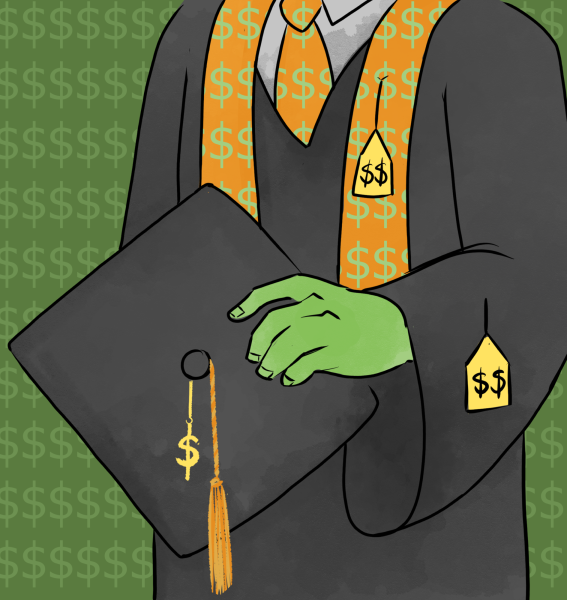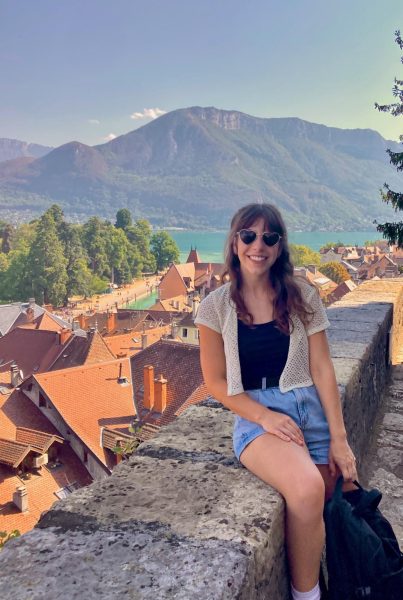SafeRide stakes: Proposed amount of financial increases seemed invalid
February 8, 2016
It’s ironic how a service that uses vans to provide safe transit for students has no idea where it’s going.
Representatives on behalf of the Associated Students of Oregon State University spoke on their program’s monetary needs Saturday morning at the Student and Incidental Fees Committee budget presentations.
The presentation for Fiscal Year 2017 included mandatory costs of $1,162,195 for the organization as a whole. In addition, there were three proposals, known as decision packages, for increases in funding.
The first package requested $243,570 for “SafeRide Service Growth.” The second package requested $16,250 for “SafeRide Op. Needs.” The third package requested $20,851 for additional utilities needed in the organization (that’s ASOSU, not SafeRide).
Following review, the SIFC denied the inclusion of decision packages No. 1 and 2 for the tentative approval and allowed for the mandatory budget approval with decision package three.
In English, they turned down the proposals for SafeRide’s (assumed to be) needed growth funds.
They did the right thing.
Last year, ASOSU representatives requested a similar increase for services in a similar proposal of around $200,000. When the SIFC denied the funds due to no substantiation of the fact that their cost requests did, in fact, match the growth, an email from former ASOSU President Taylor Sarman circulated through student email inboxes.
“Is ASOSU SafeRide going away?” The email asked. “It could be for you.”
Some OSU students took to the infamous “Things Overheard at OSU” Facebook page to share their discontent with the fact that one of the most appreciated services on campus was going away.
Only, it wasn’t going anywhere but up in terms of financial assistance.
In fact, the organization was receiving an additional $128,000 to account for a new van.
In what seemed like a similar move with hypotheticals and miscalculations, the presentation this year spoke for itself.
MacKenzie Zathan, SafeRide program manager, said students are utilizing the services a lot more, which is why they needed to account for such an increase. The proposal of decision package No. 1 would only cost students around $10 extra per term, excluding the summer.
Sounds fair at first.
Zathan and company argued that long wait times would only continue without a minimum of eight vans in the pool. ASOSU Student Advocate Drew Desilet backed her up.
“We can’t serve any additional students if SafeRide doesn’t get any additional vans,” Desilet said.
In terms of their mission, Zathan confirmed that they started as a preventative measure against sexual assault, but have broadened their approaches.
“That’s no longer our mission,” Zathan said. “We’re more inclusive now.”
The new description Zathan used was “General campus safety.”
In addition, current ASOSU President Cassie Huber chimed in on the proven “psychological” preferences of students who prefer programs such as SafeRide over the Corvallis Transit System Night Owl bus or taxi services.
Huber also voiced her preference to take SafeRide when essential:
“I will never sit in a taxi cab because I am germaphobic,” Huber said.
Sounds less like a concern for safety and more for one of convenience.
So which is it?
As discussion progressed, Memorial Union President Rafid Chowdhury raised questions about the proposals, making claims that one graph on the organization’s presentation appeared to be skewed, and that there were other holes in the presentation.
“What is ASOSU’s main mission and how does SafeRide fit into that?” Chowdhury asked. “Are we hearing from SafeRide or are we hearing from ASOSU?”
Claire McMorris, SIFC chair, was among other committee members who continued conversations on other ways SafeRide could generate new forms of revenue outside of extra student fee-funded dollars.
Huber didn’t seem to care for this.
“There’s a lot of assumptions that we haven’t had these conversations before,” Huber said. “What we’re asking through these budgets is that you give us the time to maintain these services, maintain quality and support our students.”
This translates to “shut up and give us the money.”
This is exactly why I can understand where the committee was coming from for having reservations about these SafeRide increases.
Again, they made it clear: They did not want to see SafeRide programs go away or collapse, but they saw no immediate need to make a swift move toward such massive increases.
This does not represent an antagonistic organization so much as it represents fiscal responsibility, an essential skill students, staff and faculty should expect any student leaders to at least attempt to exercise.
Finally, what the committee is requesting is not that you suffer and knock your program out of existence.
They acknowledge the success of SafeRide, but they also acknowledge the fact that they know there are enough articulate students in the ASOSU program who could put their heads together in an effort to find a more sustainable revenue model.
So instead of potentially pouting about how you cannot just have chunks of student fee dollars, you should use the more than $1 million you already receive to figure out how to increase revenue.
You’re students at a university learning how you can apply such skills in a future career.
Act like it, and be glad you currently get paid anything to begin with.
The opinions expressed in Bassinger’s column do not necessarily reflect those of The Daily Barometer Staff.





















































































































